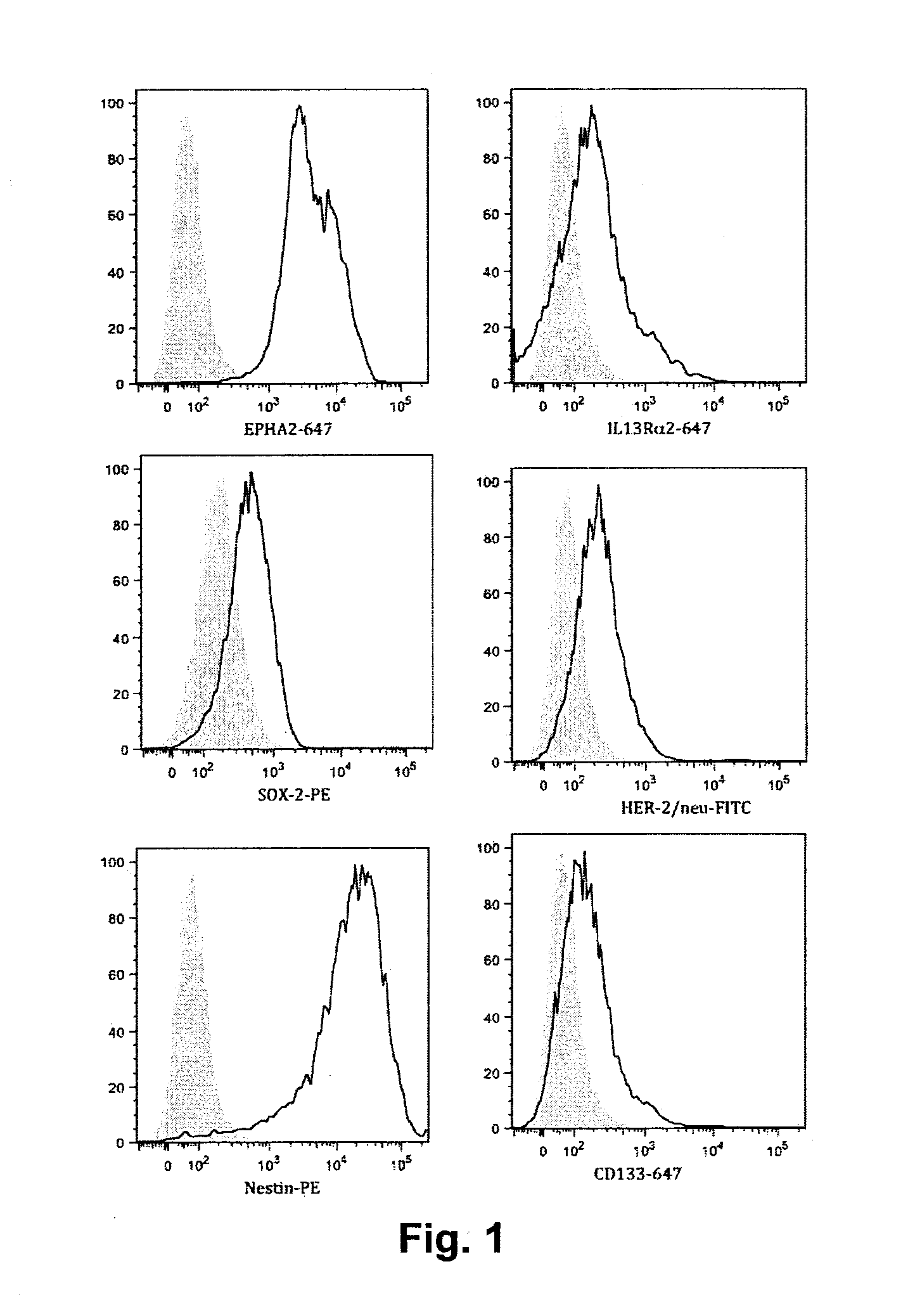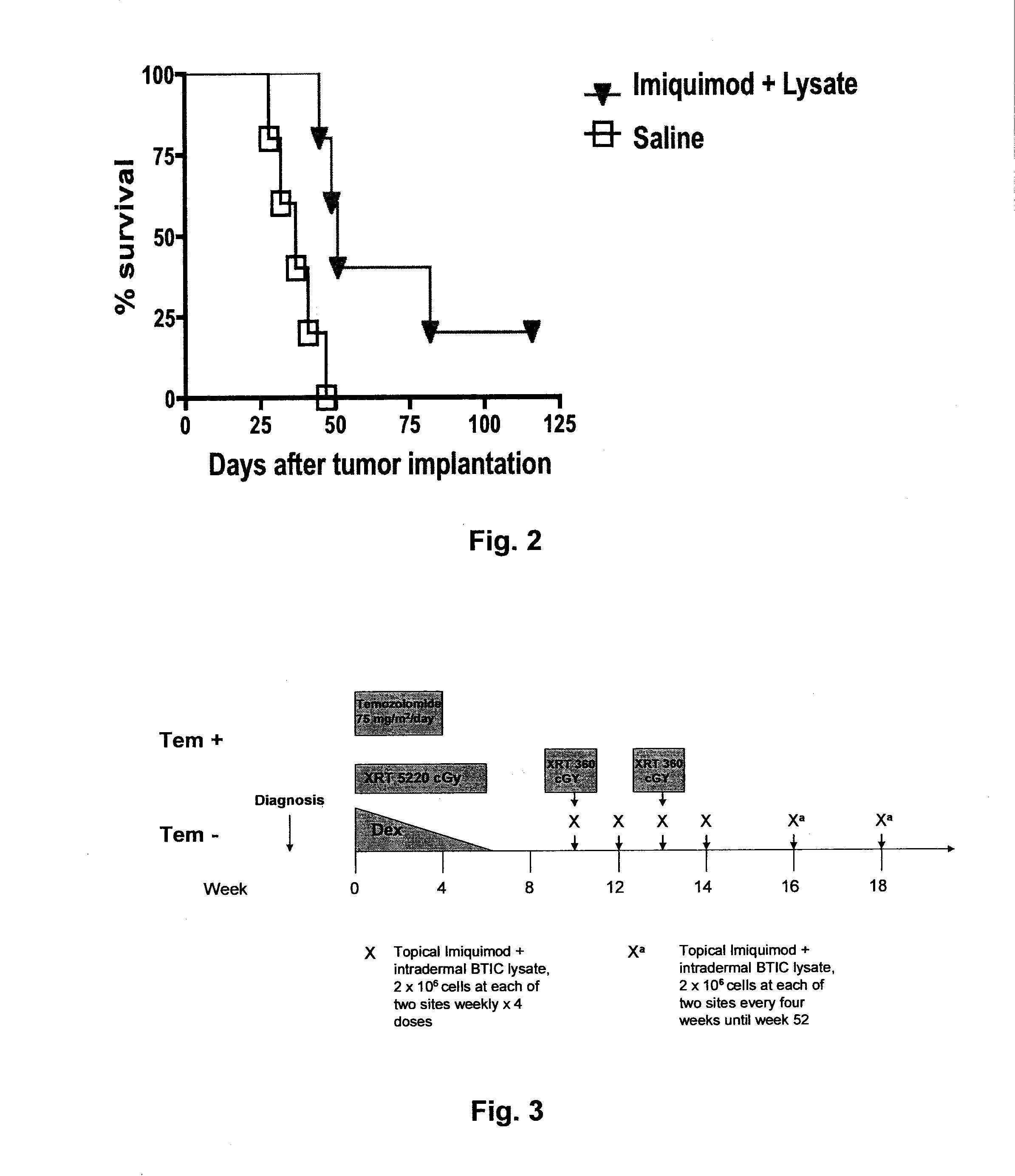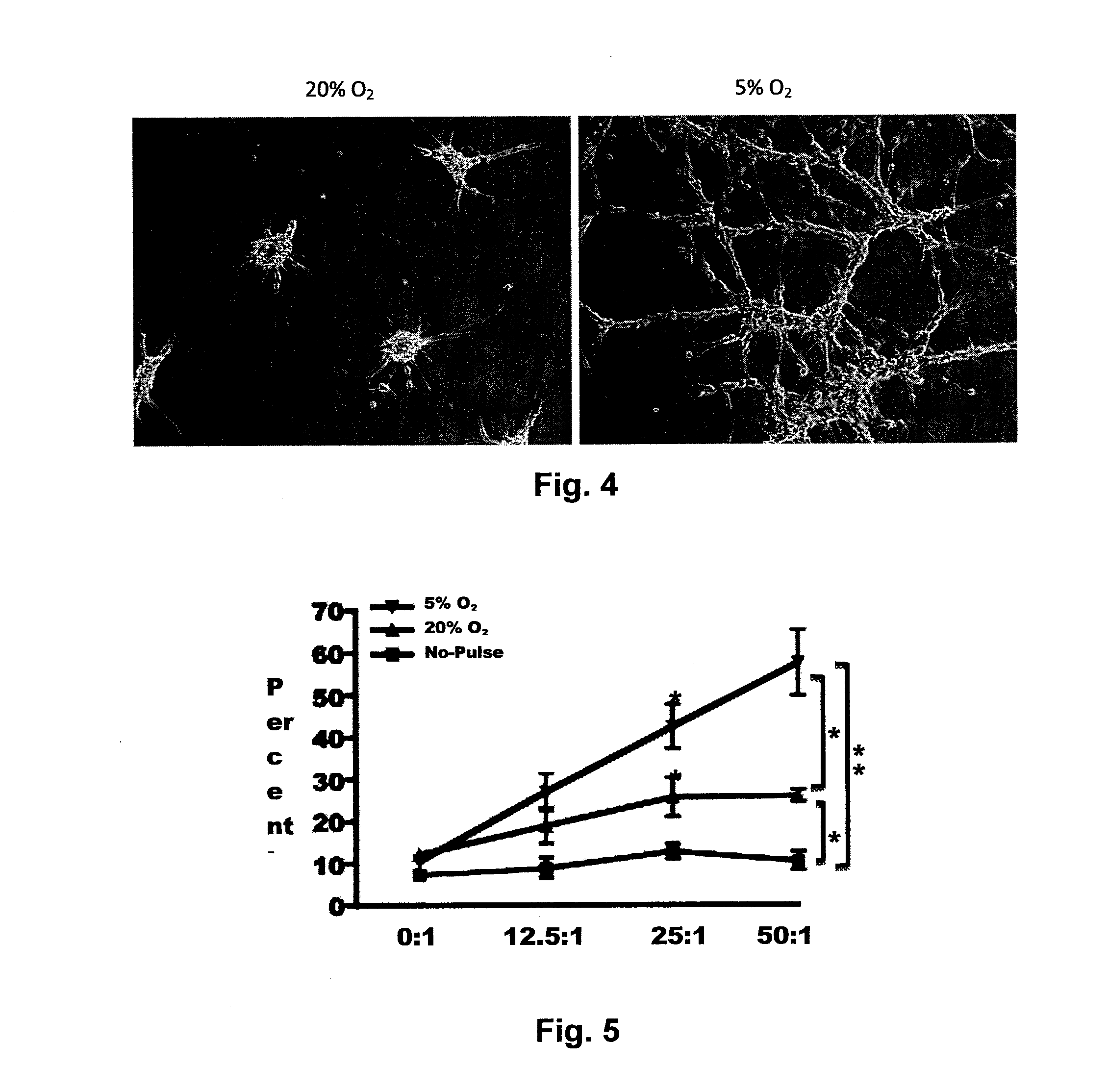Therapeutic composition for treatment of glioblastoma
- Summary
- Abstract
- Description
- Claims
- Application Information
AI Technical Summary
Benefits of technology
Problems solved by technology
Method used
Image
Examples
example 1
[0125]The present inventors have developed a novel therapy utilizing immunotherapy with Imiquimod and brain tumor initiating cell (BTIC) vaccine for the treatment of Diffuse Intrinsic Pontine Glioma (DIPG), a deadly brain tumor that occurs chiefly during childhood and the young adult years. The histology of the great majority of DIPGs is glioblastoma multiforme (GBM), WHO grade IV (Tsuchida T, Shimbo Y, Fukuda M, et al. Computed tomographic and histopathological studies of pontine glioma. Child's Nery Syst. 1985;1:223-229). Past experience has shown that DIPG responds to radiation therapy, but only transiently. The majority of children afflicted with this tumor die within two years of diagnosis. Attempts to significantly improve outcomes with adjuvant chemotherapy and / or concurrent radio-sensitizing agents have failed to date (Frazier J L, Lee J, Ulrich W T, et al. Treatment of diffuse brainstem gliomas: failed approaches and future strategies. J Neurosurg Pediatrics. 2009;3:259-269...
example 2
[0138]Dendritic cell (DC) vaccination is a powerful approach for cancer immunotherapy that has recently obtained regulatory approval, and tumor lysate-pulsed DC vaccines are being tested in clinical trials. Tumor cell lysates (TLs) are often generated from cells cultured in atmospheric oxygen (˜20% O2), which is higher than the O2 tension in the tumor in situ. It has been discovered that culturing murine tumor cells in 5% O2 profoundly enhanced the efficacy of TL vaccines. The inventors thus sought to determine if culturing primary human glioma cells in 5% O2 would enhance DC potency and tumor antigen expression. Unlike primary glioblastoma cells cultured in 20% O2, cultures in 5% O2 showed a partial reversion toward the gene expression patterns in the parental tumor in situ. Additionally, 5% O2 TLs were taken up more efficiently by DCs, which exhibited a superior ability to present antigen to CD8 T cells. CD8 T cells primed by 5% O2 lysate-pulsed DCs had significantly improved tumo...
example 3
[0164]GBM6-AD cells can be grown to generate apoptotic bodies to pulse onto autologous dendritic cells to make a vaccine.
[0165]Production of Dendritic Cells. Peripheral blood mononuclear cells (MNCs) are collected with an FDA-licensed apheresis instrument using established, standard collection procedures. Sterile technique is followed to prevent contamination of the collection. The cells are seeded in a tissue culture flask or cell factory at a viable seeding density of 1.0E+05-1.5E—05 and incubated at 37° C., 5% CO2, On day +3, 20% total volume of culture medium supplements with IL-4 and GM-CSF (1,000 IU / mL) is added to the cells. On day +6 the cells are matured by adding GM-CSF (1,000 IU / mL), ILlbeta (25 ng / mL) TNF-alpha (50 ng / mL), IFN-alpha (10,000 IU / mL), IFN-gamma ((1,000 IU / mL), and Poly-IC (20 μg / mL) and incubating (37° C., 5% CO2) until day +8. A brain tumor apoptotic body (1 apoptotic cell per iDC) is added on day 6 as well. Mature, pulsed alpha-type 1 polarized DCs are ha...
PUM
| Property | Measurement | Unit |
|---|---|---|
| Time | aaaaa | aaaaa |
Abstract
Description
Claims
Application Information
 Login to View More
Login to View More - R&D
- Intellectual Property
- Life Sciences
- Materials
- Tech Scout
- Unparalleled Data Quality
- Higher Quality Content
- 60% Fewer Hallucinations
Browse by: Latest US Patents, China's latest patents, Technical Efficacy Thesaurus, Application Domain, Technology Topic, Popular Technical Reports.
© 2025 PatSnap. All rights reserved.Legal|Privacy policy|Modern Slavery Act Transparency Statement|Sitemap|About US| Contact US: help@patsnap.com



